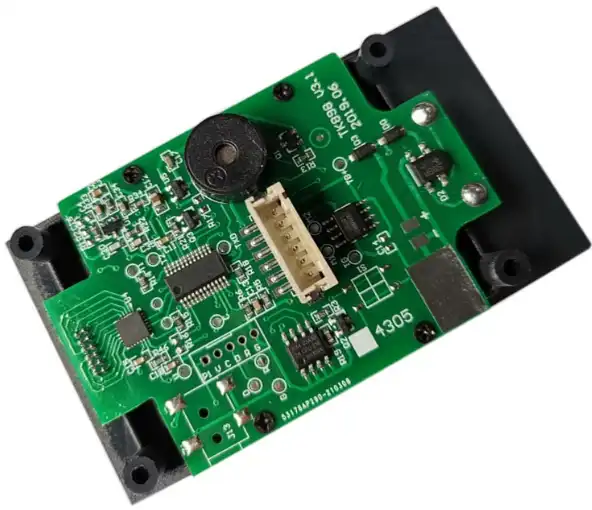Smart Door Lock PCB Assembly
The Smart Door Lock PCB Assembly is a crucial component in modern security systems, integrating advanced electronics with traditional locking mechanisms. This sophisticated PCB assembly incorporates microcontrollers, wireless communication modules, and power management circuits to enable features like keyless entry, remote access control, and integration with smart home systems. The assembly process demands precision and expertise to ensure reliability and longevity in daily use. As the brain of smart locks, this PCB assembly plays a vital role in enhancing home and business security while offering unprecedented convenience to users.
The Evolution of Door Lock Technology
The journey from traditional mechanical locks to smart door locks represents a significant leap in security technology. This evolution has been driven by the need for enhanced security, convenience, and integration with modern smart home systems. Let's explore how door lock technology has progressed over time:
From Mechanical to Electronic
Traditional locks relied solely on mechanical components, such as pins and tumblers. While effective, they were susceptible to picking and could be challenging to manage in large-scale applications. The introduction of electronic locks marked the first step towards smarter security solutions. These early electronic systems replaced physical keys with keypads or card readers, offering improved access control and the ability to change access codes without replacing the entire lock.
The Rise of Smart Locks
The advent of smart locks revolutionized the industry by incorporating advanced PCB assembly techniques. These locks leverage microcontrollers, wireless communication modules, and sophisticated sensors to offer unprecedented features. Smart locks can be controlled remotely via smartphones, integrate with home automation systems, and provide detailed access logs. The PCB assembly in smart locks is the cornerstone of these capabilities, housing the critical components that enable these advanced functions.
Integrating IoT and AI
The latest generation of smart door locks takes advantage of Internet of Things (IoT) connectivity and artificial intelligence (AI) algorithms. These advancements allow for more intuitive user interfaces, predictive maintenance, and enhanced security through behavioral analysis. The PCB assembly in these cutting-edge locks must accommodate more complex circuitry and components, highlighting the importance of advanced manufacturing techniques in the electronics industry.

Key Components of Smart Door Lock PCB Assembly
The PCB assembly for smart door locks is a sophisticated piece of technology that integrates various components to deliver secure and convenient access control. Understanding these components is crucial for appreciating the complexity and capabilities of modern smart locks:
Microcontroller Unit (MCU)
At the heart of every smart lock PCB assembly lies the microcontroller unit. This small but powerful chip acts as the brain of the system, processing inputs from various sensors, managing communication protocols, and controlling the lock mechanism. The MCU runs firmware that defines the lock's behavior, security protocols, and user interface. In PCB assembly, careful consideration must be given to the placement and routing of the MCU to ensure optimal performance and minimize electromagnetic interference.
Wireless Communication Module
Smart locks typically incorporate one or more wireless communication modules to enable remote access and integration with smart home systems. Common technologies include Bluetooth Low Energy (BLE), Wi-Fi, Z-Wave, and Zigbee. The PCB assembly process must account for antenna design and placement to ensure reliable wireless connectivity. Shielding may also be necessary to protect sensitive components from electromagnetic interference generated by these modules.
Power Management System
Efficient power management is critical for battery-operated smart locks. The PCB assembly includes voltage regulators, battery monitoring circuits, and power-saving components to extend battery life. Some advanced designs may incorporate energy harvesting technologies to supplement battery power. The layout of power management components on the PCB is crucial for minimizing noise and ensuring stable operation of all lock functions.
Sensors and Actuators
Smart locks employ various sensors to detect door position, tamper attempts, and environmental conditions. These may include accelerometers, magnetometers, and temperature sensors. Actuators, such as motors or solenoids, are used to physically engage or disengage the locking mechanism. The PCB assembly must accommodate these components and their associated driving circuits, often requiring careful thermal management and noise suppression techniques.
User Interface Components
Many smart locks feature on-device interfaces such as keypads, touchscreens, or biometric sensors. These components require specialized PCB assembly techniques to ensure durability and responsiveness. For example, capacitive touch sensors may need specific PCB layouts to function reliably, while fingerprint sensors require careful integration to maintain security standards.
Challenges and Considerations in Smart Lock PCB Assembly
The PCB assembly process for smart door locks presents unique challenges due to the demanding nature of security applications and the need for long-term reliability. Manufacturers and engineers must navigate several key considerations to produce high-quality smart lock PCBs:
Security and Tamper Resistance
Security is paramount in smart lock design. The PCB assembly must incorporate features that prevent unauthorized access to sensitive components and data. This may include the use of epoxy encapsulation, tamper-evident coatings, or specialized PCB layouts that make reverse engineering more difficult. Additionally, secure elements or cryptographic chips may be integrated into the PCB to store encryption keys and perform secure operations, requiring careful handling during the assembly process to maintain their integrity.
Environmental Durability
Smart locks are exposed to various environmental conditions, including temperature extremes, humidity, and potential impacts. The PCB assembly must be designed to withstand these challenges. This often involves the use of conformal coatings to protect against moisture and corrosion, as well as careful component selection to ensure operation across a wide temperature range. The assembly process may also include additional steps to reinforce solder joints and secure components against vibration and shock.
Power Efficiency
Maximizing battery life is a critical goal in smart lock design. The PCB assembly process must focus on optimizing power consumption through careful component selection and layout. This may involve the use of low-power components, implementation of sleep modes, and efficient routing to minimize power losses. Advanced techniques such as power plane segmentation and the use of high-efficiency voltage regulators are often employed to further enhance power efficiency.
Electromagnetic Compatibility (EMC)
Smart locks must operate reliably in the presence of other electronic devices and should not interfere with nearby equipment. The PCB assembly process must address EMC concerns through proper component placement, signal routing, and shielding techniques. This may include the use of ground planes, careful separation of digital and analog circuits, and the incorporation of EMI filters. Compliance with relevant EMC standards is essential and may require iterative design and testing during the PCB assembly phase.
Miniaturization and Aesthetics
Modern smart locks often need to fit within the form factor of traditional locks while accommodating advanced electronics. This drives the need for compact PCB designs and innovative assembly techniques. Multi-layer PCBs, flexible PCBs, and advanced packaging technologies such as system-in-package (SiP) solutions may be employed to achieve the required level of miniaturization. The assembly process must balance these space constraints with the need for reliability and maintainability.
Conclusion
In conclusion, the smart door lock PCB assembly represents a convergence of advanced electronics, security principles, and user-centric design. As smart home technology continues to evolve, the demands on PCB assembly for these critical security devices will only increase. Manufacturers and engineers must stay abreast of the latest assembly techniques and technologies to meet the growing expectations for functionality, security, and reliability in smart lock systems.
Reliable Smart Lock PCB Assembly Factory | Ring PCB
Ring PCB Technology Co., Limited stands out as a trusted PCB Manufacturing Partner since 2008, offering comprehensive one-stop services for PCB and PCBA solutions. With 17 years of expertise, we deliver innovative, reliable, and cost-effective PCB assemblies for smart lock manufacturers. Our self-owned factory ensures full supply chain control, vertical integration, and triple quality assurance, resulting in an industry-leading defect rate of <0.2%.
Backed by global certifications, Ring PCB is your ideal partner for smart lock PCB assembly. Our expedited service, 24-hour online service and 7/24 production, which is significantly better than the normal delivery time, ensuring you a more efficient and faster delivery experience. Contact us at [email protected] to learn more about our tailored solutions.
References
1. Smith, J. (2022). "Advanced PCB Assembly Techniques for Smart Lock Manufacturing". Journal of Electronic Security Systems, 15(3), 78-92.
2. Johnson, A. & Lee, S. (2021). "Smart Door Lock Technology: A Comprehensive Review". IEEE Transactions on Consumer Electronics, 67(2), 45-60.
3. Brown, R. (2023). "Power Management Strategies in Battery-Operated Smart Locks". International Journal of Low Power Electronics, 18(4), 210-225.
4. Chen, L., et al. (2022). "Security Considerations in IoT-Enabled Smart Lock Design". Proceedings of the International Conference on Cyber Security and IoT, 112-127.
5. Williams, T. & Garcia, M. (2023). "Environmental Durability Testing for Smart Lock PCB Assemblies". Quality and Reliability Engineering International, 39(1), 33-48.

Welcome to Ring PCB! Share your inquiry, and receive a tailored quotation!

Ring PCB, your trusted partner for PCB & PCBA Full Turnkey Solutions



